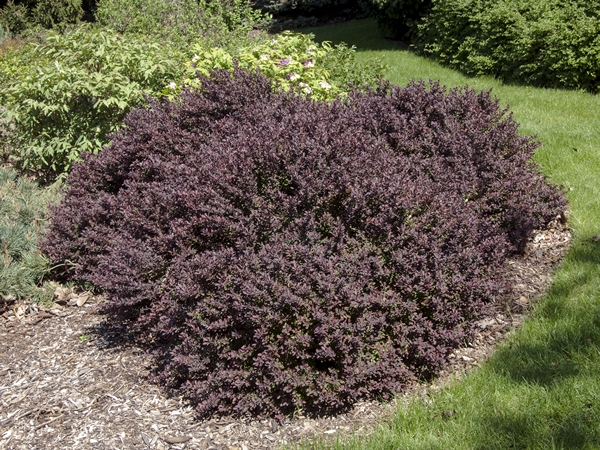| Description | Royal Burgundy Barberry (Berberis thunbergii Gentry) is a dwarf burgundy colored shrub. |
|---|---|
| Pronunciation | (Ber-ber-is)(thun-Ber-jee-a) |
| Plant Type | Shrubs Deciduous |
| Hardiness Zone | 4-8 |
| Sunlight | full |
| Moisture | average |
| Soil & Site | average |
| Flowers | small yellow pendant with purple veins |
| Leaves | rich burgundy in spring, matures to soft reddish-black |
| Stems | have spines |
| Roots | fiborous |
| Dimensions | 2-2.5 by 2-3 feet (HS) |
| Maintenance | A combination of the dense foliage and the spiny stems make this plant a garbage collector. They grab onto any piece of paper that blows through the yard. To avoid lots of punctures and scrapes, a good pair of gloves and a long sleeve shirt are required when cleaning this plant in the spring. Some pruning may be needed to maintain shape. If you like the flowers pruned after the blooming period |
| Propagation | Plant Patent PP9,461, cuttings |
| Cultivar Origin | "Discovered growing in a bed of Berberis 'Crimson Pygmy' plants at the Leo Gentry Wholesale Nursery in Gresham, Oregon in 1989." (#144) |
| Misc Facts | Genus name comes from the Latinized form of the Arabian name for the fruit. Specific epithet honors Swedish botanist Carl Peter Thunberg (1743-1828) who reportedly identified this species in Japan in 1784 (#144) |
| Notes & Reference | #144-Missouri Botanical Gardens web site (www.missouribotanicalgarden.org) |

Cart

